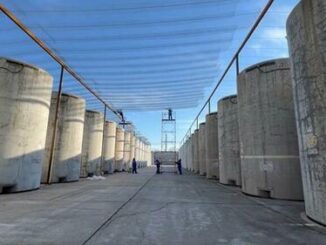
The IEA has kept its forecast for global oil demand this year unchanged at a level above its estimate of current supplies, but said with risks to its forecast “likely to the downside”, there is unlikely to be an acute deficit.
But it cautioned that increasing seasonal demand throughout the northern hemisphere summer could lead to strain, if refiners cannot keep pace. Reduced exports of Russian products and limited spare refining capacity have aggravated tightness in products markets, according to the IEA’s monthly Oil Market report that was published on 12 May.
Gasoline and middle distillate margins are running at historically elevated levels in all regions. “The refining system in the west is sort of running flat out,” said BP’s chief executive Bernard Looney on 3 May.
“While a first tranche of SPR releases halted the precipitous decline in OECD industry stocks in March, crude made up the majority of it and product stocks have continued to fall,” the IEA said.
The Paris-based group predicts global demand at 99.4mn b/d this year, the same forecast it gave in its previous report, for year-on-year growth of 1.8mn b/d. Most of the comparative growth has already happened, with the lifting of Covid-19 restrictions in many countries allowing for greater consumption of road and jet fuels in the first quarter of the year, it added.
High prices and slowing economic growth will weigh on demand in the fourth quarter, according to the IEA. It also warned that this could be exacerbated by lengthy pandemic lockdowns in China and growing international restrictions on Russia.
“A large part of the demand response to high prices will come in the form of curtailed personal mobility and business activity,” the IEA said. “This will trim transport fuel demand as the year goes on.”
Global oil supplies fell by 710,000 b/d to 98.1mn b/d in April, when Russia shut in nearly 1mn b/d of mostly crude, the agency said. The IEA expects a further 600,000 b/d drop in Russian output this month, with the decline potentially exceeding 2mn b/d in June and above 3mn b/d from July onwards, which would take the country’s annual production to its lowest since 2004. But it noted that there was a “high degree of uncertainty” to these forecasts and it has pushed back the worst-case scenario it outlined in its previous report, when it said up to 3mn b/d could be off line in Russia as of May.
The IEA noted that Russian oil exports in April increased by 620,000 b/d to 8.1mn b/d, albeit with an increased proportion heading for destinations unknown. Crude exports were higher than in any other months this year, with products exports also up but remaining at lower levels than in January and February. There was a notable shift in trade flows, with more Russian oil heading to India and Turkey at the expense of exports to the EU, US and UK. But the EU remained Russia’s largest market.
Excluding Russia, the agency forecasts supply to grow by 5.2mn b/d this year, with steady growth from Middles East Opec producers and the US.
Opec+ production fell by 1.03mn b/d last month to 43.12mn b/d, according to the IEA.
“The magnitude of the Russian decline meant that — taking into account only the 19 members bound by the supply deal — output tumbled [by] 840,000 b/d compared to a planned 400,000 b/d increase,” IEA said.
Opec+ in March dropped the IEA from its list of secondary sources used to monitor the group’s monthly production.
Source: Argusmedia.com



